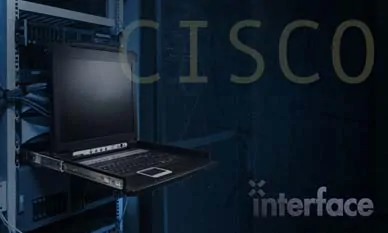
x
Course: Outline
Course Outline:
- Exploring the Functions of Networking
- Introducing the Host-To-Host Communications Model
- Operating Cisco IOS Software
- Introducing LANs
- Exploring the TCP/IP Link Layer
- Starting a Switch
- Introducing the TCP/IP Internet Layer, IPv4 Addressing, and Subnets
- Explaining the TCP/IP Transport Layer and Application Layer
- Exploring the Functions of Routing
- Configuring a Cisco Router
- Exploring the Packet Delivery Process
- Troubleshooting a Simple Network
- Introducing Basic IPv6
- Configuring Static Routing
- Implementing VLANs and Trunks
- Routing Between VLANs
- Introducing OSPF
- Building Redundant Switched Topologies
- Improving Redundant Switched Topologies with EtherChannel
- Explaining the Basics of ACL
- Enabling Internet Connectivity
- Introducing AI and ML in Network Operations
- Introducing System Monitoring
- Managing Cisco Devices
- Securing Administrative Access
- Implementing Device Hardening
- Exploring Layer 3 Redundancy
- Introducing WAN Technologies
- Introducing QoS
- Explaining Wireless Fundamentals
- Introducing Architectures and Virtualization
- Explaining Software-Defined Networking
- Introducing Network Programmability
- Examining the Security Threat Landscape
- Implementing Threat Defense Technologies
Lab Outline:
- Get Started with Cisco CLI
- Observe How a Switch Operates
- Perform Basic Switch Configuration
- Inspect TCP/IP Applications
- Configure an Interface on a Cisco Router
- Configure and Verify Layer 2 Discovery Protocols
- Configure Default Gateway
- Explore Packet Forwarding
- Troubleshoot Switch Media and Port Issues
- Troubleshoot Port Duplex Issues
- Configure Basic IPv6 Connectivity
- Configure and Verify IPv4 Static Routes
- Configure IPv6 Static Routes
- Configure VLANs and Trunks
- Configure Inter-VLAN Routing
- Configure and Verify Single-Area OSPF
- Configure and Verify EtherChannel
- Configure and Verify IPv4 ACLs
- Configure a Provider-Assigned IPv4 Address
- Configure Static NAT
- Configure Dynamic NAT and PAT
- Configure and Verify NTP
- Create the Cisco IOS Image Backup
- Upgrade Cisco IOS Image
- Secure Console and Remote Access
- Enable and Limit Remote Access Connectivity
- Configure and Verify Port Security
- Log in to and Monitor the WLC
- Configure an Open Wireless Network
- Define a RADIUS Server and Enable SNMP and Syslog
- Configure a WLAN to Use WPA2 PSK
Audience
This training is designed for anyone seeking CCNA certification. The training also provides foundational knowledge for all support technicians involved in the basic installation, operation, and verification of Cisco networks.
The job roles best suited to the material in this training are:
- Entry-level Network Engineers
- Entry-level Network Administrators
- Entry-level Network Support Technicians
- Entry-level Help Desk Technicians
Prerequisites
The knowledge and skills you are expected to have before attending this training are:
- Basic computer literacy
- Basic PC operating system navigation skills
- Basic internet usage skills
- Basic IP address knowledge
There are no formal prerequisites for CCNA certification, but you should make sure to have a good understanding of the exam topics.
What You Will Learn
- Identify the components of a computer network and describe their basic characteristics
- Understand the model of host-to-host communication
- Describe the features and functions of the Cisco IOS Software
- Describe LANs and the role of switches within LANs
- Describe Ethernet as the network access layer of transmission control protocol and the internet protocol (TCP/IP) and describe the operation of switches
- Install a switch and perform the initial configuration
- Describe the TCP/IP internet layer, IPv4, its addressing scheme, and subnetting
- Describe the TCP/IP transport layer and application layer
- Explore the functions of routing
- Implement basic configuration on a Cisco router
- Explain host-to-host communications across switches and routers
- Identify and resolve common switched network issues and common problems associated with IPv4 addressing
- Describe IPv6 main features, addresses and configure and verify basic IPv6 connectivity
- Describe the operation, benefits, and limitations of static routing
- Describe, implement and verify virtual local area networks (VLANs) and trunks
- Describe the application and configuration of inter-VLAN routing
- Explain the basics of dynamic routing protocols and describe components and terms of open shortest path first (OSPF)
- Explain how spanning tree protocol (STP) and rapid spanning tree protocol (RSTP) work
- Configure link aggregation using EtherChannel
- Describe the purpose of Layer 3 redundancy protocols
- Describe basic wide-area network (WAN) and virtual private network (VPN) concepts
- Describe the operation of access control lists (ACLs) and their applications in the network
- Configure internet access using dynamic host configuration protocol (DHCP) clients and explain and configure network address translation (NAT) on Cisco routers
- Describe the basic quality of service (QoS) concepts
- Describe the concepts of wireless networks, which types of wireless networks can be built and how to use WLC
- Describe network and device architectures and introduce virtualization
- Explain software-defined networks
- Configure basic Cisco IOS system monitoring tools
- Describe the management of Cisco devices
- Describe the current security threat landscape
- Describe threat defense technologies
- Implement a basic security configuration of the device management plane
- Implement basic steps to harden network devices
- Discuss the need of network programmability in Enterprise networks, common programmability protocols, and configuration management tools
- Describe AI and ML in network operations
 Print Page
Print Page